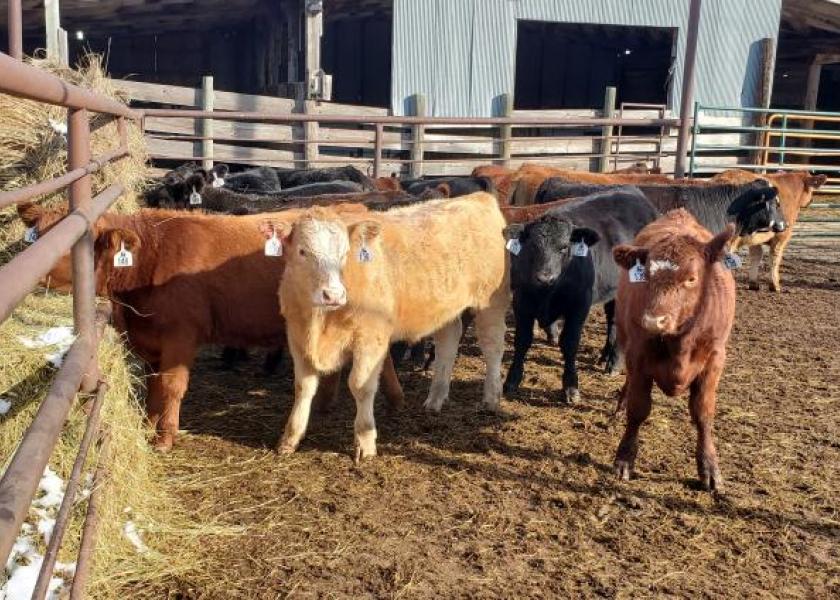Weaning From a Calf’s Point of View

Oklahoma Quality Beef Network (OQBN) Vac-45 sales will continue, beginning in November. Like many certified calf preconditioning programs, the OQBN Vac-45 program requires that calves be weaned a minimum of 45 days before sale. This 45-day period provides calves an opportunity to overcome the stress associated with weaning, bolsters immune function, and provides proper nutrition, allowing for maintained health and performance upon entering the next phase of the beef supply chain.
Weaning stressors include removal from the dam, nutritional changes, a new environment, and altered social structure. These stressors are often referred to collectively as “weaning stress”, however, each is unique and provides its own challenge to calf welfare. Understanding this critical time will allow a better understanding of the importance of a 45-day weaning period.
In cow-calf production systems, it is necessary to wean calves, usually between 6 and 8 months of age to increase cow reproductive performance and herd economic efficiency.
Many cow-calf production systems involve abrupt weaning, in which the calf is transitioned to a new environment away from the dam. While it is a necessary part of life, breaking the maternal bond by removing access to the udder and/or dam is a major stressor for a calf. Some weaning strategies such as fence-line weaning or the use of nose flaps to prevent nursing seek to mitigate stress caused by removal from the dam. While these methods provide the benefit of maintained contact with the dam, research indicates that calves fitted with nose flaps to prevent suckling still exhibit stress-related behavior such as increased vocalization, decreased time playing, and decreased rumination indicating that access to the udder is a critical component of calf contentment.
Calves experience nutritional changes as they transition away from access to milk, which is a protein and energy-dense food source and can account for up to 30% of a six-seven-month-old calf’s caloric intake. Prior to weaning nursing is a calf’s primary source of social interaction is the dam. Following weaning calves must learn to interact with their peers, which leads to brief social stress as each calf seeks to find its place within the group. Calves are usually transitioned to an unfamiliar pasture or dry lot during the weaning process resulting in environmental stress as the calf seeks to orientate to its new surroundings.
A weaning period of 45 days or more ensures calves can cope with weaning stressors and remain healthy. An Iowa State University study found that calves that had been weaned for a minimum of 30 days had a 15% lesser incidence of bovine respiratory disease compared to calves that had been weaned for less than 30 days.
Weaning stress cannot be attributed to a single stressor, but involves multiple stressors including severing the maternal bond, loss of access to the udder, altered diet and available nutrients, social challenges, and environmental changes. A weaning period of at least 45 days, lays the foundation to maintain and improve calf health. Evaluating the weaning period through the eyes of a calf provides understanding regarding this unique period of life.
Dr. Glenn Selk discussed the importance of a 45-day weaning period on an OSU SUNUP TV episode from September 1, 2018: Cow-Calf Corner - 45-day weaning basics (9/1/18) - YouTube
Dr. Mark Johnson discussed weaning strategies on an OSU SUNUP TV episode from August 21, 2021: Cow-Calf Corner - Fence Line Weaning (8/21/21) - YouTube







